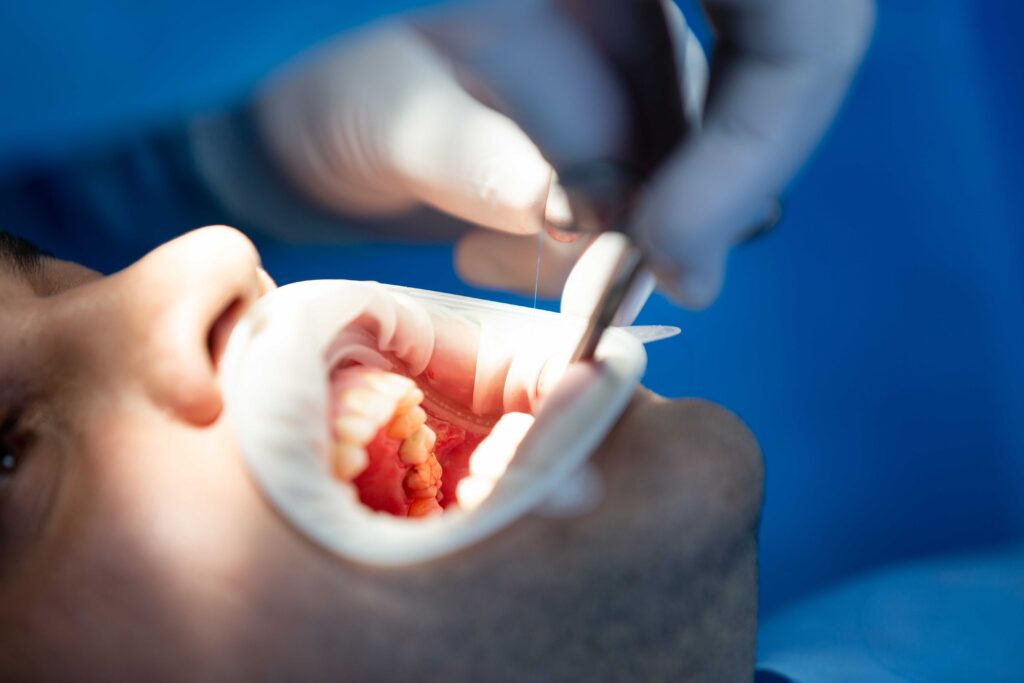In modern dentistry, the demand for aesthetic, mercury-free dental restorations has led to the widespread adoption of resin based composite filling (RBC) materials. The 2013 Minamata Convention advocated for the gradual phase-out of dental amalgam, pushing dental schools and practitioners toward resin-based restorations.
To simplify and accelerate posterior restorations, bulk-fill RBC materials were developed. These materials allow single-increment or thicker-layer placement, saving time and reducing technique sensitivity.

Types of Resin Based Composite Filling
Bulk-fill RBCs can be classified based on viscosity and curing method:
- High-viscosity or Low-viscosity Bulk-fill RBCs
- Light-cured or Dual-cured Bulk-fill RBCs
- Specialized Bulk-fill RBCs:
- Conventional Bulk-fill RBCs
- Base Bulk-fill RBCs (requiring a capping layer)
- Sonic-activated Bulk-fill RBCs
- Dual-cured Bulk-fill RBCs (enhanced depth of cure)
Each type differs in material properties, increment depth, and layering requirements.
Key Performance Factors of Resin Based Composite Filling
1. Depth of Cure
Traditional RBC restorations require 2mm increments to ensure proper light penetration and polymerization. Manufacturers have developed bulk-fill RBCs with improved curing depth (4-5mm) using enhanced photoinitiators and translucency control.
Factors affecting depth of cure:
- Material shade and opacity
- Light-curing unit intensity and exposure time
- Distance from curing light
Solution: Dual-cure bulk-fill RBCs can ensure complete polymerization even in deep cavities.
2. Polymerization Shrinkage and Stress
Polymerization shrinkage can lead to marginal gaps and stress on tooth structures.
Strategies to reduce shrinkage stress:
- Using low-shrinkage monomers
- Adding stress-relief agents
- Utilizing incremental layering techniques
3. Marginal Adaptation
The adaptation of bulk-fill RBCs varies:
High-viscosity bulk-fill RBCs → May cause marginal gaps Low-viscosity bulk-fill RBCs → Better adaptation but require a capping layer Dual-cure bulk-fill RBCs → Better marginal sealing after polymerization
Optimization: Pre-heating high-viscosity bulk-fill RBCs or using a flowable liner can improve adaptation.
4. Mechanical & Aesthetic Properties
Due to increased depth of cure, some bulk-fill RBCs have lower filler content, which may compromise wear resistance.
Recommendations:
- Base bulk-fill RBCs require a conventional RBC capping layer
- Dual-cure bulk-fill RBCs do not require a capping layer but may have reduced long-term wear resistance
Aesthetic Consideration: Bulk-fill RBCs are more translucent, which may impact esthetics for highly visible restorations.
Clinical Applications and Effectiveness
Clinical data on bulk-fill RBCs remains limited, but early results suggest that:
Base bulk-fill RBCs can replace amalgam or conventional RBCs in posterior restorations
Suitable for time-sensitive patients (e.g., pediatric or anxious patients)
Useful for deep cavities where multiple layering is impractical
Caution: More long-term clinical trials are needed before widespread adoption.
FAQs: Everything You Need to Know About Resin Based Composite Filling
1. What is the best resin based composite filling for posterior teeth?
High-viscosity or dual-cure bulk-fill RBCs offer better strength and durability.
2. How long does a resin based composite filling last?
5-10 years, depending on material choice, patient habits, and maintenance.
3. Is resin based composite filling better than amalgam?
Aesthetically superior, but longevity varies. Proper case selection is crucial.
Conclusion & Future Outlook
Bulk-fill resin based composite filling materials provide efficient, aesthetic, and mercury-free posterior restorations. While their performance is promising, long-term clinical studies are essential. Dentists should evaluate material properties, patient needs, and procedural factors when choosing RBCs.
References
Chan, K. H. S., Mai, Y., Kim, H., Tong, K. C. T., Ng, D., & Hsiao, J. C. M. (2010). Review: Resin Composite Filling. Materials, 3(2), 1228-1243. https://doi.org/10.3390/ma3021228.

